Watch Out for These 5 Stinging Caterpillars
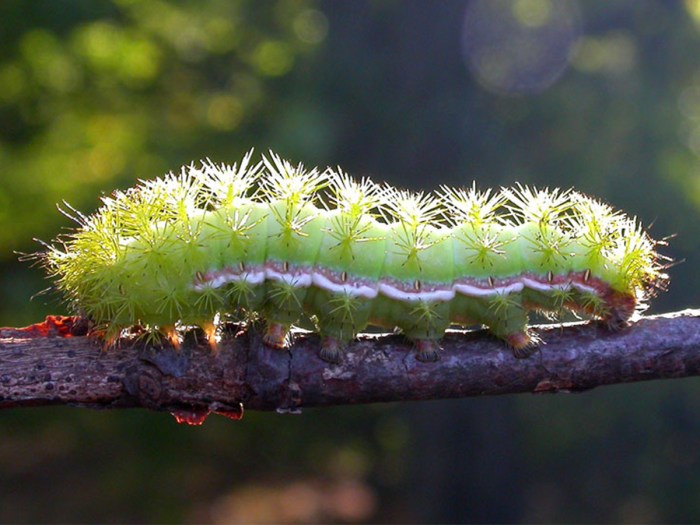
IO (2 to 3 inches long, green with pink and white stripes down either side): The biggest of the caterpillar bad boys, this one has tufts of hair sticking up all over it.
Small, slow, cute and fuzzy doesn’t always mean harmless.
Caterpillars lurk in trees, shrubs and fields throughout the country. They hang from leaves and crawl across roads and fence posts. They don’t seem like a threat.
But some pack a powerful sting.
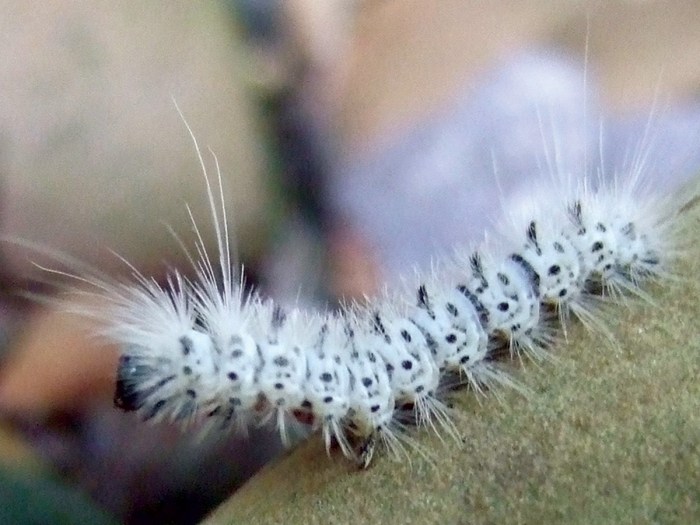
HICKORY TUSSOCK (1 inch long, light gray to white hairs with a row of black hairs going down its back): This caterpillar, along with the silver-spotted tiger, is typically the least potent.
Like this: When the hickory tussock moth caterpillar brushes against you, its tiny hairs break off in your skin. You get the sensation of being poked by a bunch of needles.
Or check out the puss caterpillar. When this caterpillar brushes against you, its fine hairs penetrate your skin and release venom. The venom flows through the hollow hairs like water through a straw, straight into you.
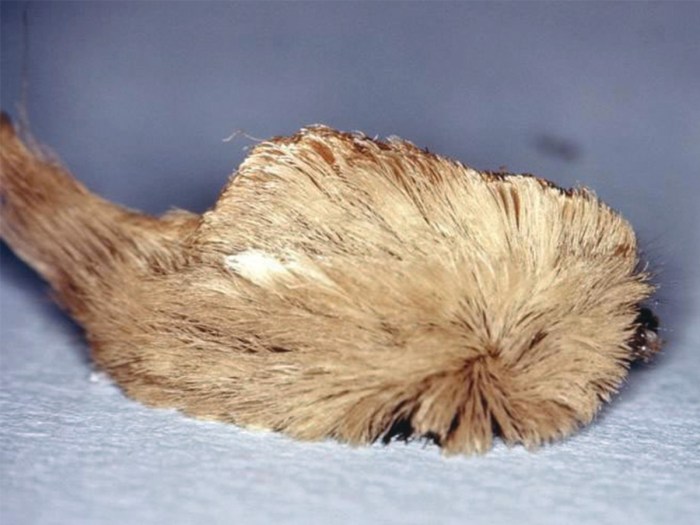
PUSS (1 inch long, pear shaped, gray to brown): The stinging spines are located underneath the top layer of hairs. The sting from this caterpillar is usually the most painful.
HOW BAD IS A CATERPILLAR’S STING?
Reactions to caterpillar stings vary. Some people simply can take more pain than others. The potency levels of venom from caterpillar species can differ. And potency might also vary within the same species, depending on the size of the caterpillar.
If you’re stung by one of the big venomous ones, a severe rash might break out, consisting of a few red dots where each hair penetrated your skin. In some cases, the rash might spread and swell. Blisters might also form.
In the most severe cases, which are rare, you might develop swollen lymph nodes, intestinal disorders, difficulty breathing, headache and nausea.
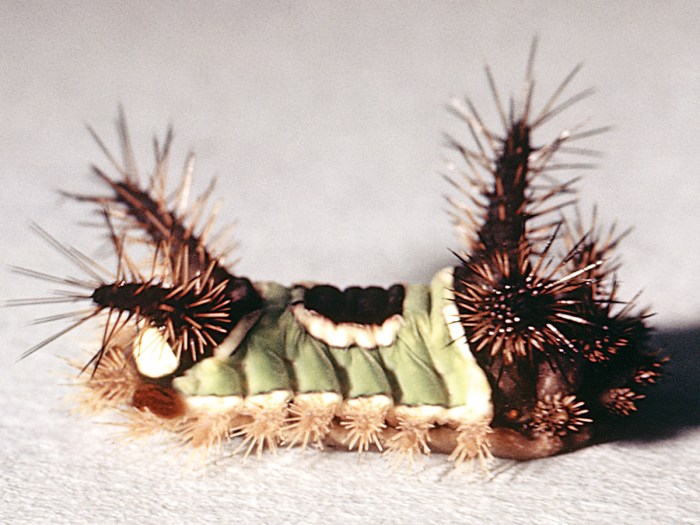
SADDLEBACK (1 inch long, brown on each end, green patch around middle, small brown patch in middle of its back that looks like a saddle): The most common stinging caterpillar.
To make matters worse, your reaction might not show up until hours after your confrontation.
And a dead caterpillar can still sting.
WHAT TO DO IF YOU’RE STUNG BY A CATERPILLAR
If you’re stung and start to hurt, roll some tape with the sticky side out across the affected area. This will help remove any fine hairs that might be stuck in your skin. If it’s on your body or clothing, remove it with protective gloves. Then scrub the area with soap and cool water to wash out venom.
Immediately apply an ice pack to reduce swelling and pain.
An antihistamine might be helpful in some cases, but be sure to check with a trusted adult first. If your reaction is severe, you might need to see a doctor. See the BSA’s medication use guidelines for more information.
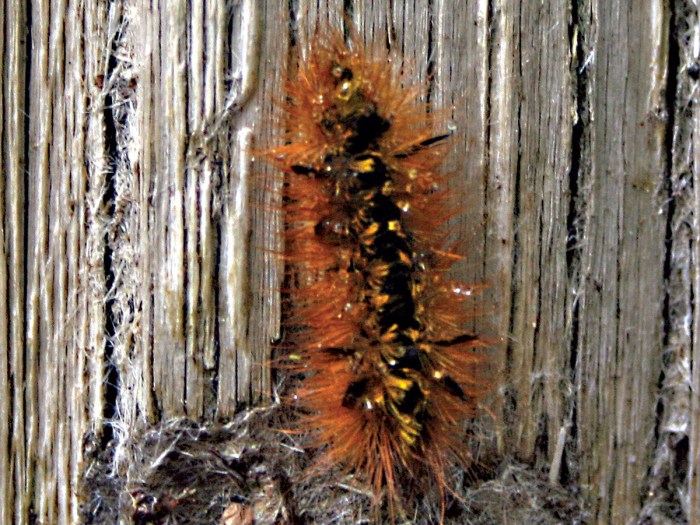
SILVER-SPOTTED TIGER (1 1/2 inches long, covered with tufts of hair that can be either brown or black): When this caterpillar matures, the body remains a darker color while the tufts of hair become gray to white.
The secret to not getting stung is to learn and look. Know that caterpillars are generally out during the summer and fall. Look before you reach for bushes, flowers, shrubs or tree branches.
I just stepped on the fat big green one..in the dark, outside on a porch rug. Barefooted. I’ve wrapped my foot up over a glob of moist baking soda to draw out the poison.
I know thatone
It bad
These drop from trees to feed on their prey–I know because I had one drop on my neck to some incredible PAIN!! Tenessee pain!
Good to know!